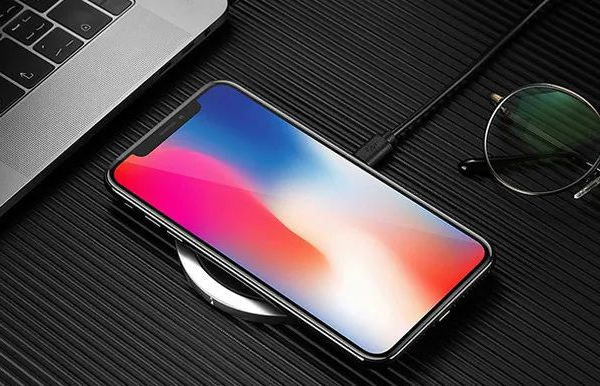In our understanding, mobile phone charging is inseparable from the power cord. So, why can a wireless charger disconnect from the power cord and directly charge the phone?
1
What is wireless charging
Wireless charging technology, also known as wireless energy transmission or wireless power transfer, is a technology that transfers electric energy from the power supply end to the power receiving device without relying on conductors or wires.
You may think this is an emerging technology, but in reality, wireless charging is not a new concept.
As early as the late 19th century, physicist Nikola Tesla proposed the idea and concept of wireless power supply. His experiment with Tesla coil failed and failed to realize this technology.
Afterwards, it was not until 1993 that Daifu Corporation of Japan implemented the world's first non-contact power supply and transportation system based on the theory of John Boyce from the University of Auckland in the United States. In 2009, American wireless power company WiTricity successfully demonstrated wireless charging at TED Global: charging two mobile phones in an empty space and activating a TV without a power supply.
2
What is the principle of wireless charging?
At present, the three main wireless charging methods are electromagnetic induction wireless charging, magnetic resonance wireless charging, and wireless wave transmission.
The electromagnetic induction wireless charging system utilizes the principle of electromagnetic induction; This device mainly consists of two parts, namely the primary coil and the secondary coil.
Firstly, the primary coil is energized. Due to electromagnetic induction, a current is generated in the secondary coil, and energy is transferred from the transmission end (primary coil) to the receiving end (secondary coil). However, due to technical limitations, the distance for electromagnetic induction wireless charging is very short, only about ten millimeters.
The magnetic resonance wireless charging system is composed of large inductance coils formed by parallel or series connection of small capacitors. It also requires energy transmission devices and energy reception devices. The transmitting end emits an electromagnetic field at a frequency to the surrounding area, and the receiving end needs to vibrate at the same frequency to achieve energy transmission. This wireless charging method has a longer distance, but the biggest challenge is how to adjust the two charging devices to the same frequency.
During the transmission process of a wireless wave transmission system, electrical energy is supplied to the microwave transmitting device to emit wireless waves, which are captured by the receiving device and then converted into current. The theoretical distance of this transmission method can reach over 10 meters, but there are many limitations in practical application, and the energy loss during the transmission process is also relatively large.
3
What is the use of wireless charging technology?
What is the use of wireless charging technology? Is this design just for charging mobile phones? There are many devices in our daily lives that require removing the power cord or making it inconvenient to connect the charging cord.
It is needless to say how convenient mobile phones and laptops will be without power lines. Other appliances, such as electric toothbrush and razors, which are often used in bathrooms and bathrooms and are easy to contact water, will also reduce the risk of water ingress and short circuit if the charging interface is removed.
Wireless charging technology is also of great significance for some implanted or embedded medical devices, such as built-in pacemakers. Charging the built-in battery directly outside the body can greatly reduce the need and difficulty for patients to replace the battery.
The benefits of wireless charging technology are quite numerous, and the simplest example is that it can save people from countless chaotic circuits. In theory, a wireless charging device can charge multiple receivers simultaneously, eliminating the problem of occupying power sockets and winding wires.
For precision equipment that is difficult to disassemble, remote devices that are difficult to access, and devices inside the human body, wireless power supply technology can also directly power the device, such as the built-in pacemaker mentioned above.
Wired charging of electric bicycles may be commonplace, and as of now, isolated charging of electric bicycles has been achieved. The wireless intelligent charging station adopts the principle of magnetic resonance wireless charging technology, which has the characteristics of high power, long-distance, high efficiency, safety, and wide voltage. As an inductive wireless charging technology, it can not only reduce labor costs and energy consumption, but also prevent safety hazards such as fire and electric shock from the source. During the charging process, if an abnormal battery temperature is detected or the battery is fully charged, it will automatically power off to prevent overcharging or overheating.
4
Is there no drawback to wireless charging?
Although wireless power supply technology has great potential, it still has many drawbacks at present.
When charging wirelessly, the phone may experience severe heating. For the "low headed" people who keep their phones in hand, being unable to use them while charging is also a very headache.
In addition, when using wired charging, the charging cable will directly power the device, allowing the battery to rest; Wireless charging, on the other hand, keeps the battery in a working state, and the amount of electricity charged into the battery is constantly consumed by the device, leaving the battery in a state of constant use, resulting in battery life loss.
In addition, the current wireless power supply technology also has drawbacks such as low charging efficiency, slow speed, low compatibility, high cost, and large energy loss, which urgently need to be studied and solved by researchers.
There are both advantages and disadvantages, but overall, wireless power supply technology is a promising and developing technology.




